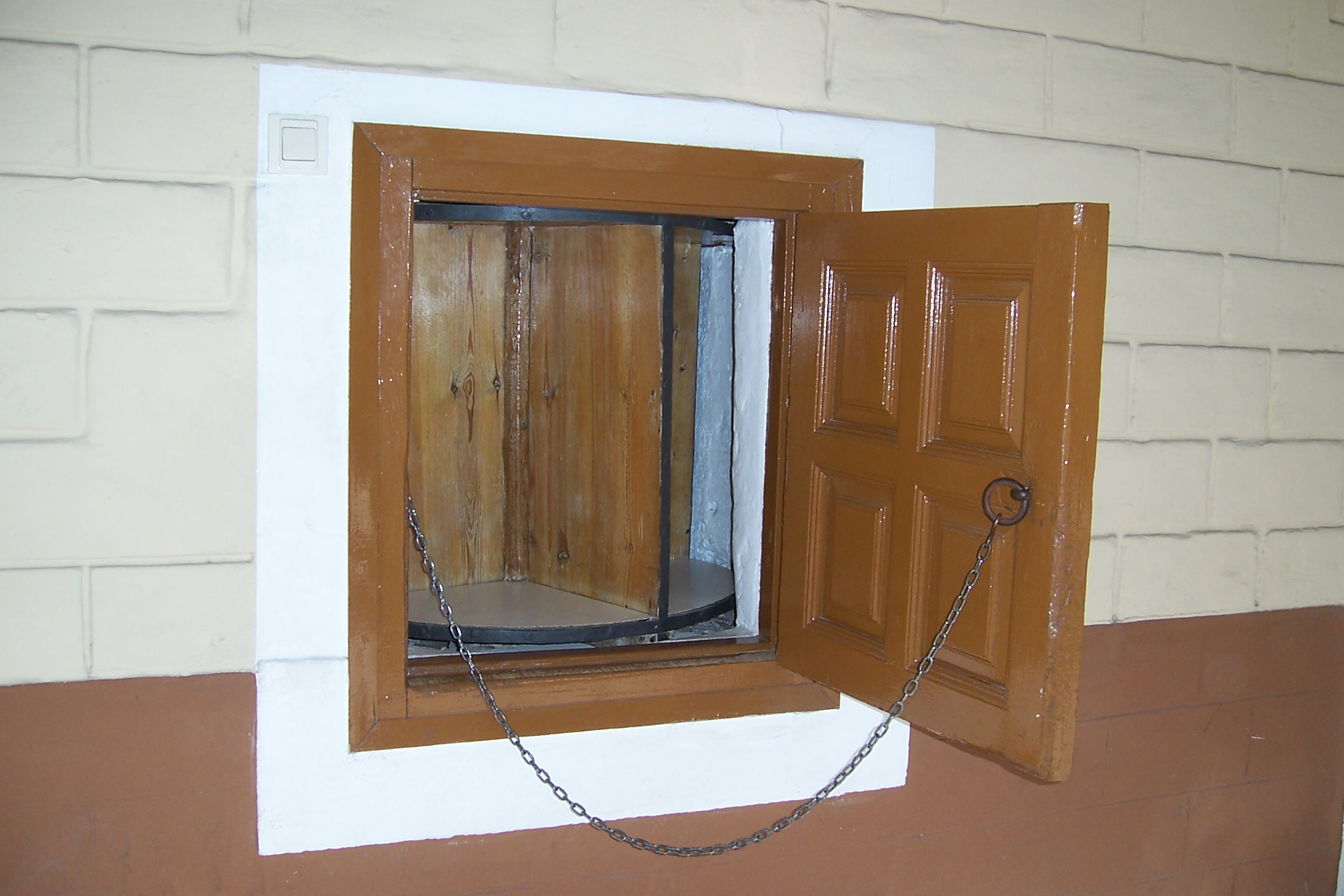Rota (architecture) on:
[Wikipedia]
[Google]
[Amazon]
 The rota or "turn" is a cylinder, open on one side, that is built inside a wall of a
The rota or "turn" is a cylinder, open on one side, that is built inside a wall of a
Gray, Arthur "Christ Church, Canterbury: I. The chronicle of John Stone, monk of Christ." University Press, Cambridge, 1897, pages 70-71. Retrieved November 5, 2010 It is usually about 50 centimeters wide by 30 centimeters high, and its opening does not permit visual or tactile contact with the uncloistered. Messages or food are put into the cylinder, then the ''rota'' is revolved so that the opening faces the other side. Monk, Monks were stationed close by or are notified that someone has turned the wheel by various mechanisms. In some cases, especially at night and in winter, the ''rota'' is filled by the monks with food, and left there for the poor, to give them something to eat without them having to ask. The ''rota'' has also been used by those mothers who don't want to (or couldn't) keep their (often illegitimate) newborn babies. They left them in the safe hands of monks or nuns, their anonymity being guaranteed by the ''rota''. In some Church
 The rota or "turn" is a cylinder, open on one side, that is built inside a wall of a
The rota or "turn" is a cylinder, open on one side, that is built inside a wall of a monastery
A monastery is a building or complex of buildings comprising the domestic quarters and workplaces of monastics, monks or nuns, whether living in communities or alone ( hermits). A monastery generally includes a place reserved for prayer whi ...
, nunnery or foundling hospital. It was used for exchanging mail and food with cloister
A cloister (from Latin ''claustrum'', "enclosure") is a covered walk, open gallery, or open arcade running along the walls of buildings and forming a quadrangle or garth. The attachment of a cloister to a cathedral or church, commonly against a ...
ed clergy
Clergy are formal leaders within established religions. Their roles and functions vary in different religious traditions, but usually involve presiding over specific rituals and teaching their religion's doctrines and practices. Some of the ter ...
, being their only communication with the world.Gray, Arthur "Christ Church, Canterbury: I. The chronicle of John Stone, monk of Christ." University Press, Cambridge, 1897, pages 70-71. Retrieved November 5, 2010 It is usually about 50 centimeters wide by 30 centimeters high, and its opening does not permit visual or tactile contact with the uncloistered. Messages or food are put into the cylinder, then the ''rota'' is revolved so that the opening faces the other side. Monk, Monks were stationed close by or are notified that someone has turned the wheel by various mechanisms. In some cases, especially at night and in winter, the ''rota'' is filled by the monks with food, and left there for the poor, to give them something to eat without them having to ask. The ''rota'' has also been used by those mothers who don't want to (or couldn't) keep their (often illegitimate) newborn babies. They left them in the safe hands of monks or nuns, their anonymity being guaranteed by the ''rota''. In some Church
diocese
In church governance, a diocese or bishopric is the ecclesiastical district under the jurisdiction of a bishop.
History
In the later organization of the Roman Empire, the increasingly subdivided provinces were administratively associa ...
s the instrument was abolished to discourage this latter use.
References